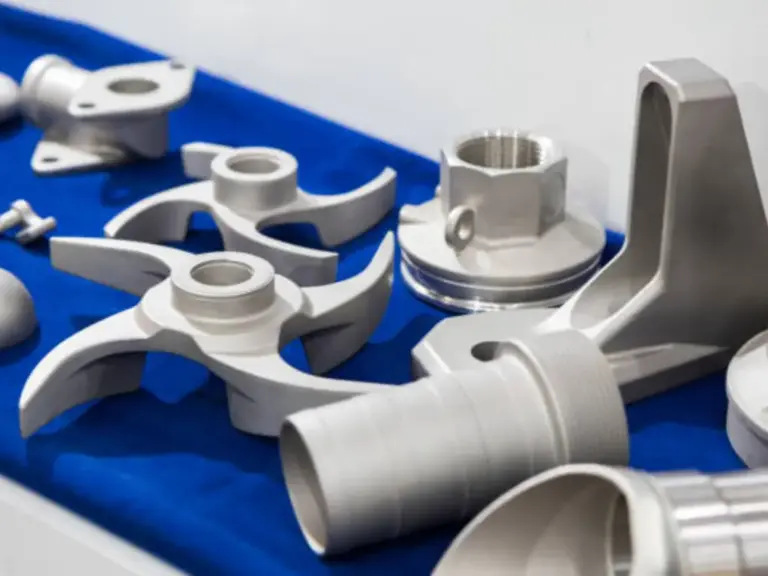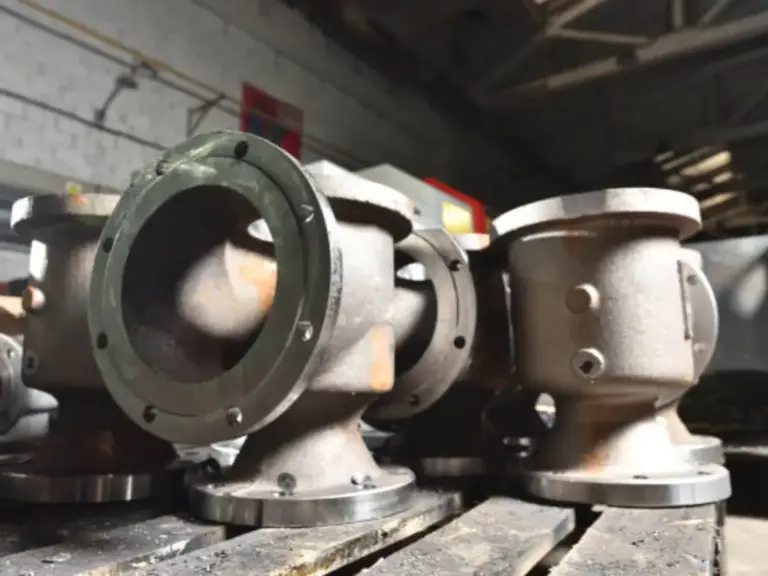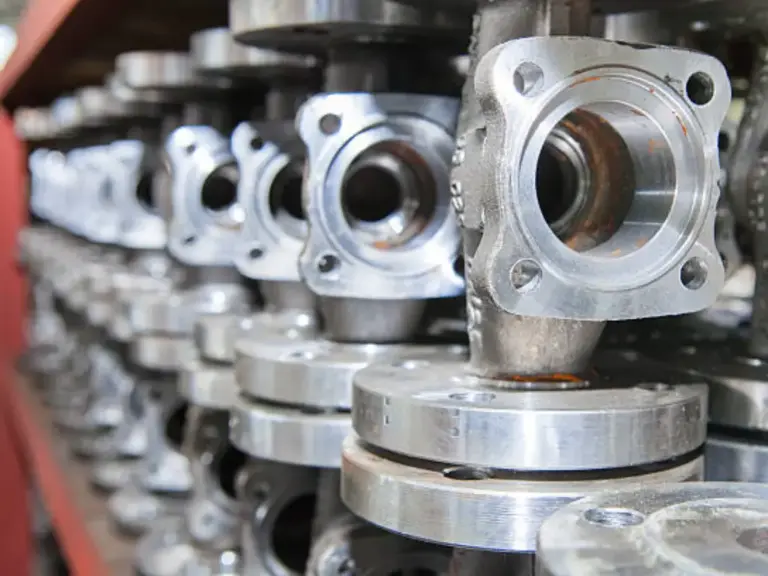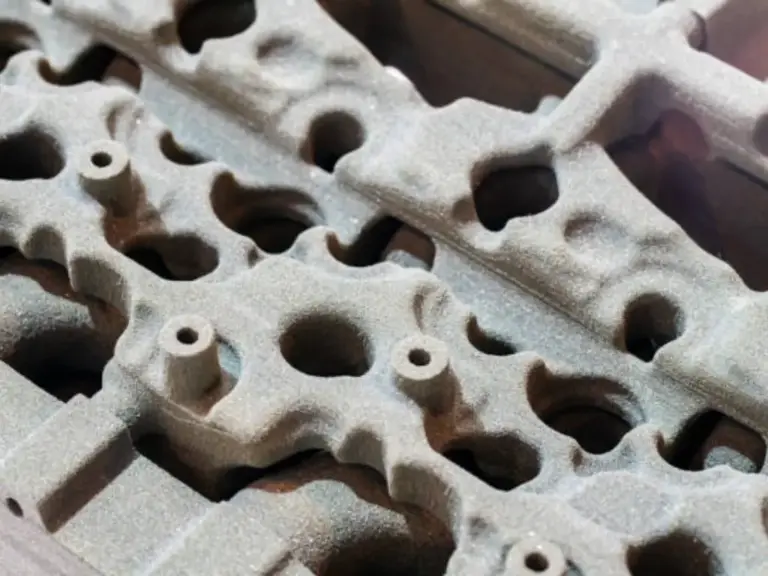Introduction: Two Pillars of Metal Shaping
The engineering and manufacturing world is based on basic methods of converting raw metals into useful metal parts and components. Forging and casting are among the oldest and most popular metal forming techniques. Although both are aimed at achieving the same desired shape of an alloy, their methods, principles, and material properties are very different. This dichotomy is critical to any engineer, designer, or procurement specialist who wants to choose the most appropriate alternative to his or her project.
This blog gives a comprehensive comparison of the two main methods of manufacturing processes. We shall go beyond mere definitions to examine the complicated variations in internal structure, mechanical properties obtained, cost considerations, and applicability. It is aimed at providing a complete guide that will help make an informed decision between the forging process and the casting process, which will eventually lead to a longer life and better performance of the end metal parts.
Process Fundamentals: Molten Metal vs. Applied Force
The main difference between forging and casting is, at the most basic level, the physical condition of the material at the shaping time.
Casting: From Liquid to Solid Form
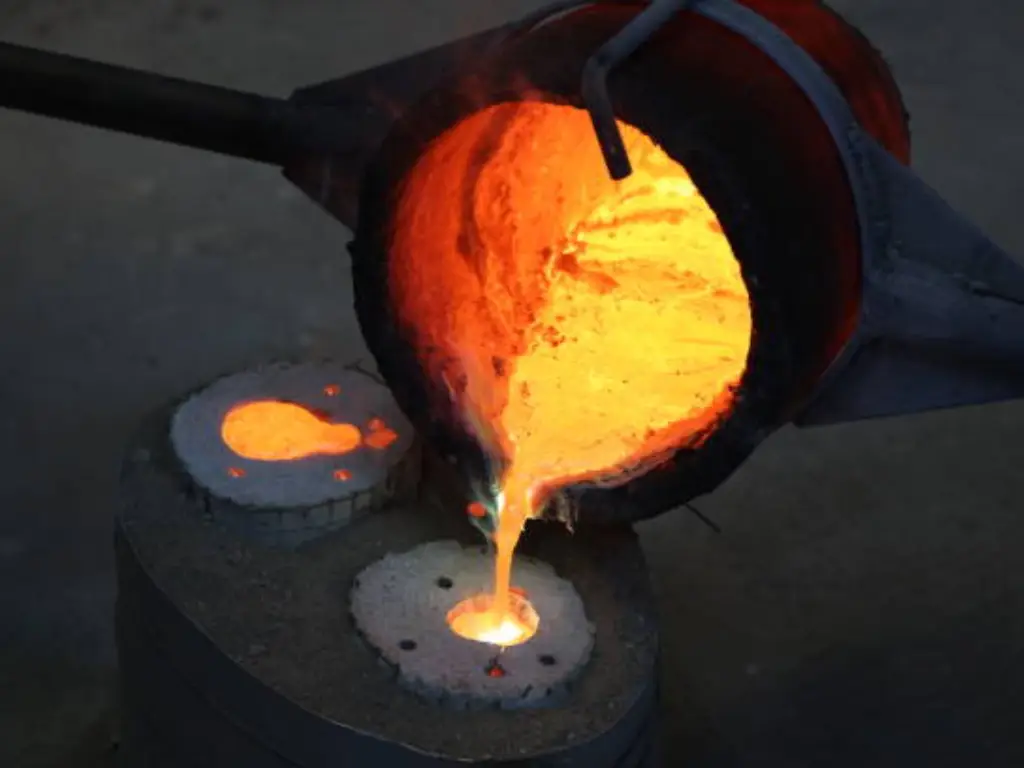
Casting or metal casting is the process of heating the alloy to a temperature higher than its melting point, which converts it into molten metal. This molten substance is then poured, injected or otherwise placed into a mold cavity that is the negative of the desired final shape. The molten metal cools down and solidifies and assumes the shape of the mold.
The casting process is very versatile, as there are many types of casting:
- Sand casting is popular with large, coarser metal components because of the reduced tooling costs.
- Die casting involves high pressure to press the molten metal (usually aluminum or zinc) into permanent steel dies, with good surface finish and dimensional accuracy.
- Permanent mold casting involves reusable metal molds that are not pressurized.
- Investment casting (also called lost wax casting) is used in those applications that require the greatest degree of accuracy and fine detail.
The natural property of this process is that the metal will solidify freely, and it is possible to produce extremely complicated shapes and geometries with little regard to the material flow constraints.
Forging: Shaping Metal in Its Solid State
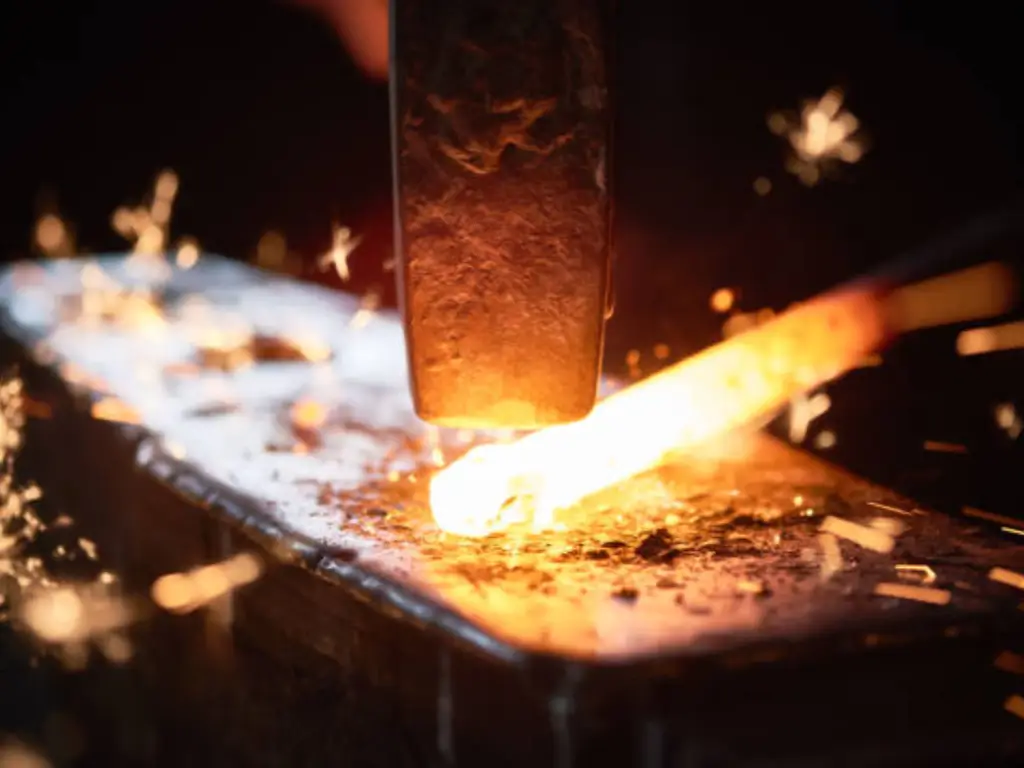
Contrastingly, the forging process works on the metal when it is in solid form. The material, which is usually an ingot or a bar, is heated below the melting point to a plastic state to make it more malleable. It is then exposed to high compressive forces through strong hammers or hydraulic presses. This is done by physically pushing the metal to flow into the required shape as dictated by the dies.
The various methods of forging are:
| Forging Method | Temperature Range | Primary Characteristic | Key Advantage(s) | Key Limitation(s) |
| Hot Forging | High (Above recrystallization temp) | Maximum material flow and malleability. | Easiest for significant shape changes; lower required force. | Less dimensional accuracy; poor surface finish. |
| Warm Forging | Intermediate (Below recrystallization temp, but elevated) | Balances flow with control. | Better dimensional control than hot forging. | Still requires subsequent finishing. |
| Cold Forging | Near room temperature | Severe deformation in the solid state. | Drastically improves surface finish and mechanical properties; no heating cost. | Requires much higher forces and is limited in part complexity. |
| Die Forging (Closed-Die) | Various (Hot, Warm, or Cold) | Metal entirely confined within shaping dies. | Better dimensional accuracy; achieves predictable grain flow (high strength). | High tooling cost; less flexible than open-die. |
| Open-Die Forging | Various (Typically Hot) | Metal is not fully confined; shaped by repeated blows. | Suitable for very large, simple shapes and low volumes. | Less precise; often requires more subsequent machining. |
The forging process is a brute-force approach, physically reforming the internal grain structure to achieve superior strength.
The Critical Edge: Strength, Structure, and Reliability
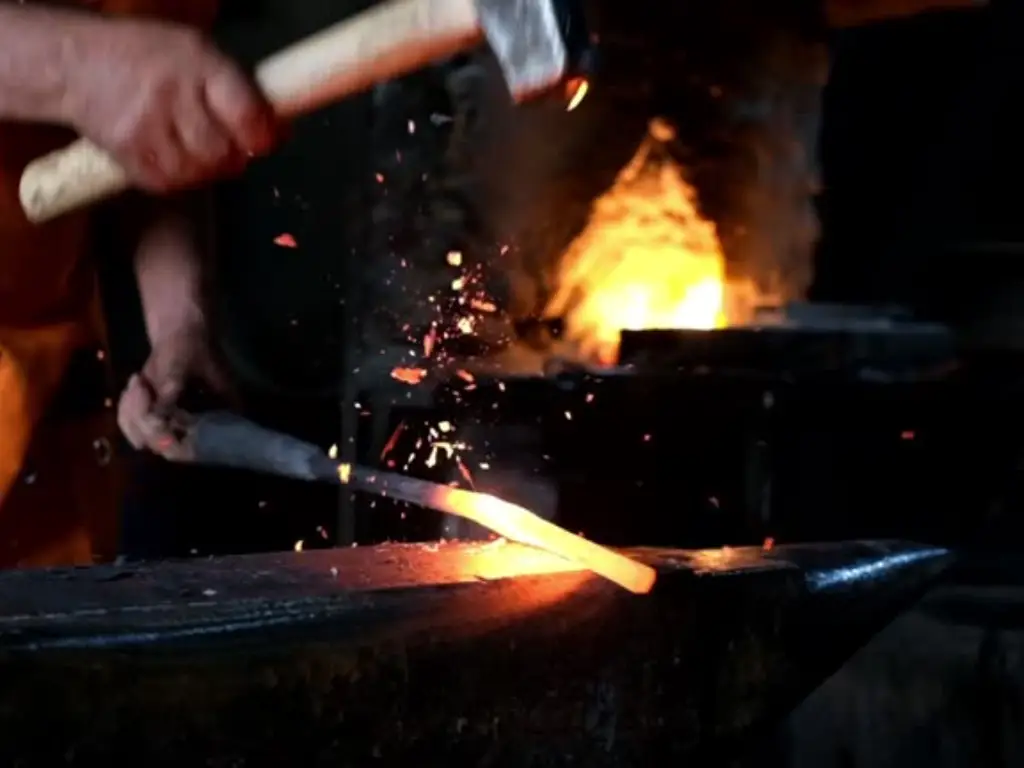
The strongest difference between the two processes, especially in the choice of materials to be used in a demanding application in aerospace or heavy machinery, lies in metallurgical recrystallization and the resultant internal grain structure.
By its nature, the casting process is an uncontrolled cooling and solidification of molten metal. This normally leads to a non-directional grain structure that is rough and a possibility of defects like porosity, voids and shrinkage. Although these defects are mitigable, they inevitably affect the structural integrity and the general durability of the cast metal. Therefore, cast metal components tend to have lower fatigue strength and reduced crack propagation resistance.
The forging process, however, exposes the metal to a lot of compression and hammering. This operation improves the grain structure and forms a directed grain flow that follows the shape of the component. This flow of the grain is basically a tight packing of the metal, which creates a tight grain structure and significantly increases the mechanical properties.
In terms of strength:
- Forging has increased strength, tensile strength, and impact resistance because of the unidirectional flow of the grains.
- The lack of internal voids and porosity helps to achieve a high level of strength and more predictable behavior under stress.
Where the mechanical properties of forging are important (such as durability and resistance to cyclic loading, such as engine parts or landing gear), it is the better choice. Even aluminum forging still has a clear edge over metal casting of the same alloy in areas of high stress.
Design Complexity, Tolerances, and Machining Needs
Although forging has unquestioned high strength, it is frequently constrained in its ability to create very complex geometries and complex designs. This is the area in which the casting process has historically excelled.
The physical limitations of the deformation process imply that the forging process is most effective with simpler shapes. Internal cavities, drastic variations in the thickness of the metal, and sharp corners are hard, or impossible, to produce by die forging and demand a lot of subsequent CNC machining or assembly by welding and punching.
The freedom to fill a mold cavity with complex parts with internal features is the ultimate freedom of molten metal liquid. Traditional processes such as sand casting do not, however, fare well in terms of accuracy, leading to large dimensional tolerances and a low surface finish.
Investment Casting: Precision for Complex, Near-Net Shapes (Marketing Focus)
Here, the more sophisticated metal casting methods, namely investment casting by silica sol method, provide a better process that can effectively fill the gap between design freedom and dimensional accuracy.
BesserCast is the manufacturer of this very specific process of manufacturing, which includes silica sol precision casting and vacuum casting. In contrast to sand casting or conventional die casting that leave too much material to be intensive CNC machined, our investment casting process provides an unprecedented level of dimensional control, typically to geometric tolerances of CT4-CT6. It is essential to meet precise specifications on very complicated shapes and complicated designs that are produced using specialty alloys such as nickel and chrome steel, without the constraints of the forging process.
This capability to produce metal components in a near-net shape significantly reduces the secondary CNC machining, which is expensive. To ensure quality predictability, BesserCast has a good process control in all the stages. We have a strict quality control whereby we check the entire product with international standard equipment, such as a Spectrometer, CMM, Tensile Testing Machine, and Hardness Tester.
The strategic best choice is our precision investment casting when the complexity of parts and final dimensional accuracy is paramount, and the engineers can design without being limited by the constraints of die forging or the low precision of sand casting. Go to https://www.bessercast.com/ to learn how we create value by being precise.
Cost Drivers: Tooling Investment and Production Volume
The economics of forging and casting depend mostly on the tooling and the scale of production.
Initial tooling, in the form of the dies to be used in die forging, is usually high. These dies are produced out of hardened steel, which is very durable and is exposed to extreme forces and thermal shock during the forging process.
On the other hand, the initial expenses of simple sand casting molds are extremely low. But in high-precision or high-volume methods, this cost structure is inverted:
- Die Casting: The dies are costly, but the casting process is high-speed and automated, which means that the piece price is very low at large volumes.
- Investment Casting: Investment casting tooling (the wax dies) may be expensive, although the savings in machining and material wastage can easily offset the cost, particularly with precious alloys such as nickel and chrome.
In summary: Forging is generally capital-intensive upfront, but highly efficient for very high volumes of simple parts. Casting offers flexibility; sand casting has lower tooling costs for small batches, while high-volume die casting and precision investment casting offer different economies of scale based on final quality and geometry requirements.
Material Suitability and Industry Applications
Forging and casting are applied in industries, although their material characteristics differ, and they can be used in various tasks.
High-stress applications with the highest durability and fatigue strength are forged. This includes:
- Aerospace: Landing gear parts, engine turbine blades, and structural fittings where tensile strength cannot be compromised.
- Automotive: Crankshafts, connecting rods, and axles (weight reduction by forging with aluminum).
- Heavy Machinery: Sturdy tools and carrying elements.
Casting is preferred because of its capability to deal with complex chemistries and shapes:
- Valves and Pumps: Complex internal passages of large valve bodies, frequently of special alloys.
- Engine Blocks and Heads: Huge, complicated components that have several internal fluid conduits.
- Ornamental Objects: Metal casting can be highly aesthetic.
It is usually reduced to a risk assessment. In case a failure is disastrous, directional grain flow of forging can be the difference maker, even though the complexity of parts that can be produced through the casting process is greater.
How to Select the Optimal Process: A Decision Guide
The choice of the forging process or the casting process is not often random. It must be directed by a clear project needs hierarchy:
- Strength and Reliability: When the metal components are to be subjected to extreme stress, cyclical loading, or impact, and excellent mechanical properties are the most important factors, forging is the starting point.
- Geometric Complexity: In the event that the design has internal features, convoluted passages, or extremely complex designs, casting is preferable.
- Tolerance and Surface Finish: To achieve the most precise specifications that reduce post-processing, high-precision processes such as die casting or investment casting must be considered.
- Volume of Production: Low volume is usually inclined towards sand casting because of low tooling costs; very high volume is usually inclined towards automated die casting or efficient die forging.
The engineers have to consider the advantages of increased strength (forging) versus the cost reduction and design liberation of the different types of casting.
Conclusion: Making an Informed Manufacturing Choice
Forging or casting is a trade-off decision between design flexibility and structural integrity. The forging process has superior strength and offers a longer life span and higher durability through its smooth grain flow and high-density microstructure. By using molten metal, the casting process offers unparalleled freedom for complex forms.
Nevertheless, the manufacturing environment is changing. Contemporary accuracy techniques, such as investment casting, have reduced the performance and quality gap considerably. Using sophisticated tooling and materials science, such processes as our silica sol process at BesserCast enable engineers to attain the high part complexity and finer grain structure of advanced metal casting with close-to-net shape tolerances that reduce secondary costs related to CNC machining, welding, and other finishing processes.
In your next project, do not just inquire what is the best one across the board. Rather, evaluate the special needs of your metal parts in relation to the established drawbacks and benefits of each method. You can be sure of the best performance and cost-efficiency by selecting the method, whether it is forging to the greatest fatigue resistance or precision investment casting to the greatest complexity, that best fits your specifications exactly.
